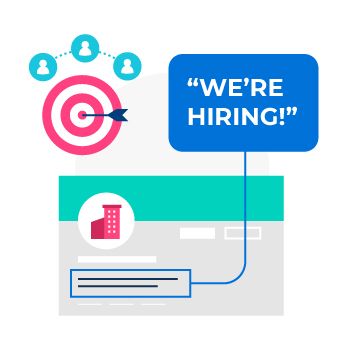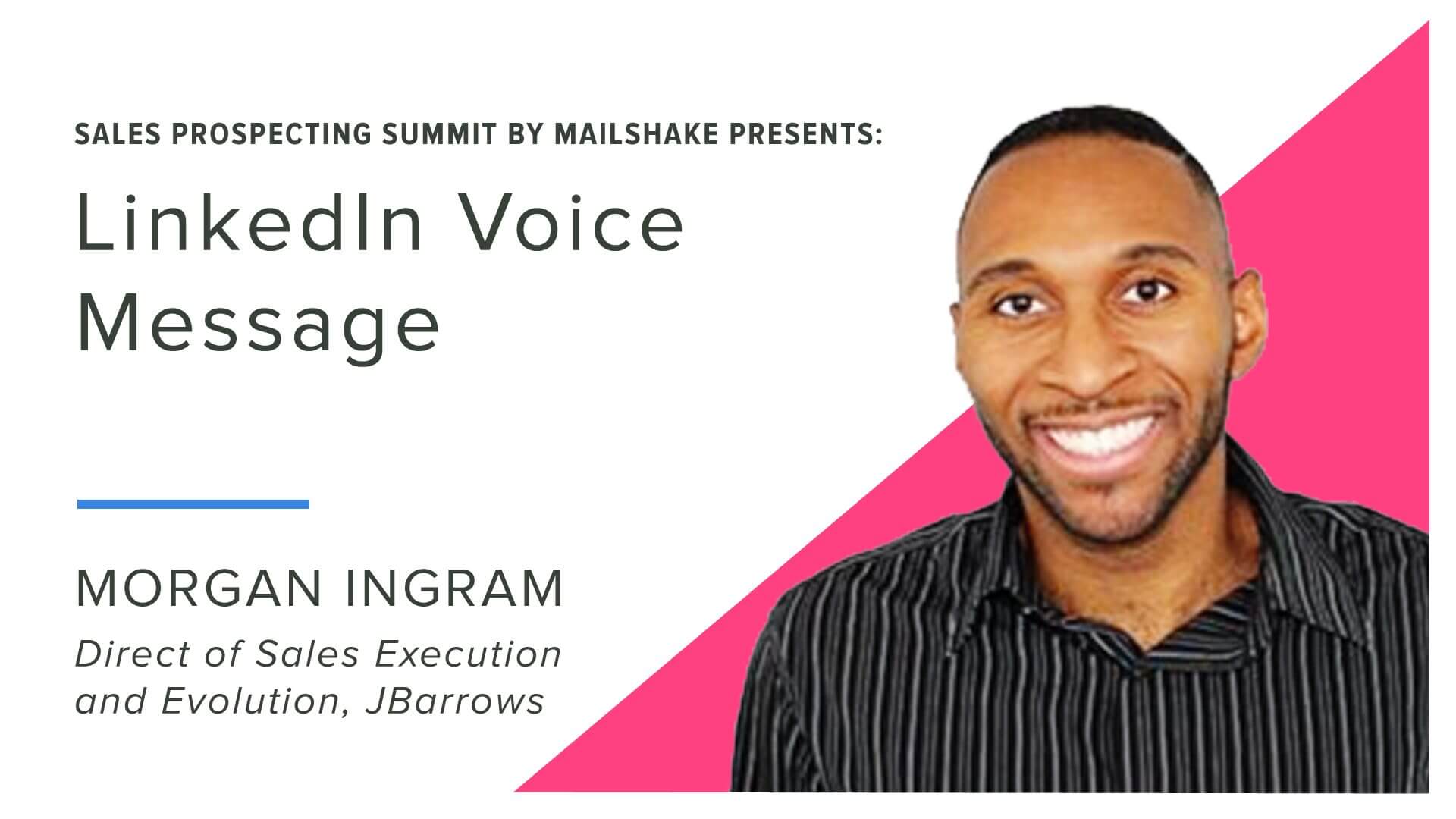How to Write a LinkedIn Headline for Salespeople (With 3 Examples)

Contents
If LinkedIn were a country, it would be the third-largest in the world. More than 930 million professionals use it to network, learn, and seek out new opportunities.
Moreover, LinkedIn members possess significant purchasing influence. When compared to the average online audience, they exhibit twice the buying power, with four out of five individuals steering business decisions within their respective organizations.
Hence, as a salesperson, leveraging LinkedIn proficiently becomes paramount. It all commences with a captivating headline that entices potential clients to initiate a meaningful dialogue.
What is a LinkedIn Headline & Why Is It Important?
Let’s start with the basics.
A LinkedIn headline is the section at the top of the profile page where you describe yourself, your role, and your skills in up to 120 characters.

As you can see, it also shows up alongside your name in the LinkedIn search results:

That means a strong, eye-catching, engaging headline can really make the difference between a searcher clicking your profile or moving on. When writing your LinkedIn headline, your goal should be to entice users to find out more about you, your background, and your expertise.
At this point, you might be thinking: hold on, I’ve never changed my LinkedIn headline, it’s just there. So why should I bother now?
Well, sure, if you don’t customize your headline, LinkedIn won’t just leave it blank – instead, it’ll default to your company and job title. There’s nothing wrong with that, per se; lots of people do it.
But doing the same as everyone else won’t help you stand out.
So don’t take the easy option. Customize your headline and give people more of a reason to click your profile.
Interested in automating LinkedIn tasks? Try Mailshake’s LinkedIn automation tool which allows you to automate profile views and connection requests.
Tips for Creating Sales-Friendly LinkedIn Headlines
Now that we’ve covered the value of a custom LinkedIn headline, here’s how to do it:
1. Consider Your Audience
 As with anything in sales and marketing, you should start by thinking about the people you’re speaking to.
As with anything in sales and marketing, you should start by thinking about the people you’re speaking to.
Who are you hoping to attract? What messaging would compel them to click?
As a super simple example, you can see that my LinkedIn headline includes the phrase: “We’re hiring!” Obviously, I’m predominantly speaking to candidates here, because we’re hiring and I want to find exceptional people. But it’s also an added trust factor for companies that might want to buy our product – they can see we’re hiring, which shows we’re a growing business.
There are other considerations here, too. Depending on your industry, there might be some specific terminology that would help you stand out – maybe a sales certification, or an award, or an accreditation.
Hopefully, you’ll already have developed some detailed buyer personas, so you should have a good idea who you’re writing for and what they want to see.
2. Use Language That Resonates
As an extension to my last point, you also want to write in a way that truly speaks to your audience.
Say your product is super techy, but your average buyer isn’t technical at all. Don’t drop in a bunch of tech jargon or complex terminology, because they likely won’t be familiar with it (or even if they are, they may not understand it).
On the other hand, you should definitely incorporate the sort of words your audience would use. Describe yourself and the value you add in terms that resonate with them.
3. Highlight Your USPs…
With limited space to stand out, you should focus on the stuff that really sets you and your company apart from the crowd.
For instance, let’s say you’re a delivery company. Your USP is all about value – you pledge to deliver the same service as your rivals, but for a smaller fee.
That’s the sort of thing that makes for a compelling LinkedIn headline, especially if you can put some numbers to it. Don’t just say you’re cheaper; say you’ll undercut the competition by 5%.
4. …But Don’t Be Arrogant
Sure, you want to express your value proposition and differentiators with confidence. But you definitely don’t want to come across as arrogant – no one likes a know-it-all!
Don’t say anything you can’t support with clear evidence. And if you can’t back something up, it definitely shouldn’t be one of your USPs.
LinkedIn has published a list of the most common buzzwords used in people’s profiles. Here’s the top ten:
- Specialized
- Experienced
- Leadership
- Skilled
- Passionate
- Expert
- Motivated
- Creative
- Strategic
- Successful
You should generally avoid these words – not only do they sound arrogant, they’re also pretty meaningless (especially if everyone else is using them too).
5. Demonstrate the Value You Add
What are the things you do that add genuine value for your customers? The traits and behaviors you display that make the biggest difference?
Again, these characteristics can really set you apart from the competition – provided they have meaning.
Consider leaning on your LinkedIn recommendations for inspiration here. For instance, let’s look at a couple of mine:

A few things stand out there, like:
- I’m driven by data
- I know a lot about content marketing
- I give insightful advice and recommendations
Those could all be factors to emphasize in my LinkedIn headline. And best of all, I’m not being arrogant, because they’re not even my words!
6. Keep it Simple
Above all, don’t over-complicate your headline.
You’ve only got 120 characters to play with, so you should concentrate on communicating one simple idea. Try to cram in too many angles and you risk confusing everyone.
A handy tip here is to speak your headline out loud. Does it make sense? Would the average person in your audience derive real meaning from it?
If not, it’s a bad headline.
What to Avoid in Your LinkedIn Headline
 I’ve already given you a few words to avoid in your LinkedIn headline.
I’ve already given you a few words to avoid in your LinkedIn headline.
As a more general pointer, bear in mind that whoever your audience is, they’re on LinkedIn, which is ultimately a platform for business networking.
Standard business writing best practices apply here, just like if you were writing for cold email outreach. That means you should typically keep away from:
- Excessive capitalization: You might think it adds emphasis to your messaging, but in reality it just looks like you’re shouting.
- Emoji: They’re informal, so unless your audience research tells you that your buyers love them, you should steer clear.
- Jargon: Rather than helping you sound professional, jargon often comes across as lazy or uninformed.
2 Templates for Writing a LinkedIn Headline That Drives Sales
I’ve given you a bunch of theory-based advice. Now, let’s get more practical.
Here are a couple templates you can use to structure your headline. Don’t feel you have to stick to them religiously – you don’t want to restrict yourself unnecessarily. But they can provide helpful inspiration for crafting a compelling message that fits the tight character count.
1. [Job Title] | Helping X do Y
In this template:
- X represents your audience
- Y speaks to the outcome they’ll see from using your product – either in terms of business results or mindset
Here’s how it could look:
- SaaS sales leader | Helping sales teams build outreach cadences with email, phone & social in as little as 5 minutes
2. I Help X With Y by Doing Z
In this template:
- X is your audience
- Y represents their problem or business challenge
- Z speaks to the solution you offer
Here’s how it could look:
- I help sales teams engage prospects & close more deals by enabling them to send personalized cold emails at scale
3 Examples of Well-Written LinkedIn Headlines for Salespeople
 Hopefully, by this point you’ve got all the tools you need to craft a compelling LinkedIn headline that steers a bunch of traffic toward your profile page and strikes up some meaningful conversations with prospects.
Hopefully, by this point you’ve got all the tools you need to craft a compelling LinkedIn headline that steers a bunch of traffic toward your profile page and strikes up some meaningful conversations with prospects.
Need a little extra inspiration? Here are some more examples of effective LinkedIn headlines, along with a few pointers about what makes them good:
1. Sales development manager | Helping startups & scale-ups grow online | US & Canada
This example communicates a ton of information in just 82 characters. It tells us:
- Their job title: This is useful because it provides context for what they do.
- Their value: We learn who they’re speaking to – startups and scale-ups – and the reason people in their audience should connect with them (to grow their brand online).
- Their location: More useful context, explaining the geographies they serve, so there’s no risk of attracting the wrong people.
2. Award-winning social media coach & international speaker teaching small businesses how to succeed
There’s a whole lot of value and expertise being communicated here. From reading this LinkedIn headline, we know that the user:
- Coaches small businesses
- Is so good at what they do, they’ve won awards for it – a valuable trust factor
- Speaks at worldwide events, which again suggests they’re worth listening to
Best of all, none of this stuff comes across as hyperbole, because it can all be supported by evidence, such as the specific awards they’ve won and the events at which they’ve spoken.
3. Helping millions of startups grow faster by building marketing & sales processes that accelerate revenue generation
This one’s a little longer (although it still clocks in under the character count at 115 characters), which means it’s also more specific. We’ve got:
- The audience (startups)
- The scale of their operation (helping millions of startups)
- The audience pain point (achieving faster growth)
- How they do it (building processes that speed up revenue generation)
Crucially, because it focuses on communicating one message, it’s not too wordy or complex. That makes it really compelling.
Conclusion
Remember, a well-crafted LinkedIn headline can serve as a powerful tool in establishing credibility, building connections, and ultimately driving business success. So invest the time and effort to develop a headline that sets you apart and positions you as a valuable resource in the dynamic world of sales on LinkedIn.





